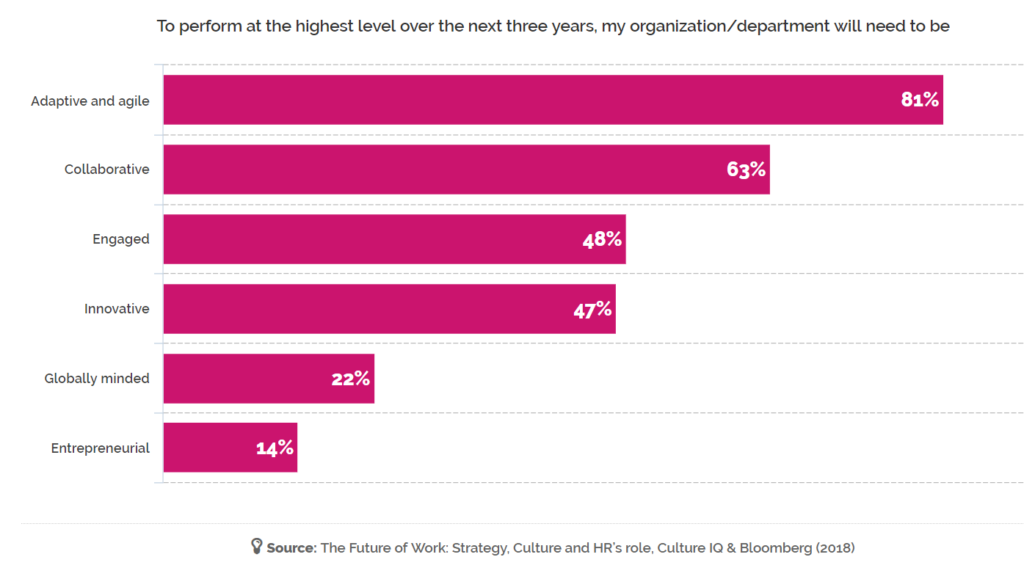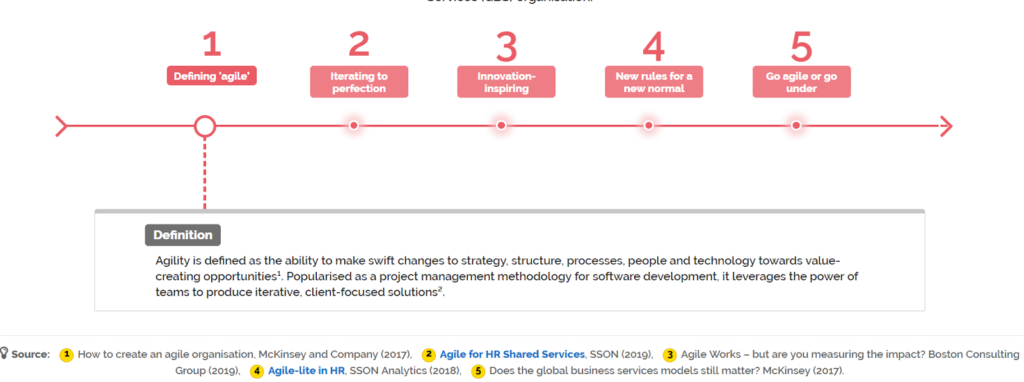Business leaders today face challenges from multiple angles. Today, new challenges exist such as declining employee engagement, increasing customer expectations, digital online expectations, and traditional hierarchical cultures losing favor in the face of sexier startup communities. Remaining competitive, executing transformational strategies, and staying adaptive is the recipe to survive.

Looking at the figure above, the common denominator is the human factor. It has long been said, if you look after your employees, they look after your customers. On the customer side, we have ever more demanding customers. New digitally native generations becoming spoilt with ’1-click’ expectations
On the employee side we have the global war on talent. A new era embracing the free movement of talent globally. In the middle, the organization. Larger companies are being forced to think more like startups and need to adapt their cultures to a new generation who want a voice. Digital natives or nomads who want to be consulted. All while feeling their superiors have a clear digital strategy and lead by example on utilizing technology to help shape and improve the business.
All in all, the C-suite and line managers are being challenged more than ever before.
Agile first?
Agile seems to suggest it is part of the answer. However, we now need tech platforms to support the transformation and make those swift changes when teams need them, otherwise, they’ll soon lose motivation and autonomy will be an empty promise Quick wins and results are important for teams to maintain momentum.

Is technology the answer?
No. Of course not. it’s part of the answer. While no computer will replace human empathy and relationships [authors opinion], the explosion of HR Tech solutions on the market and events, like UNLEASH and HR Technology, show us that it is possible to utilise technology to build better organisations when focussing on the human factors.
People versus processes!
Human connections drive everything good. Nourishing the culture is critical for strategy execution, retaining talent and maintaining satisfied employees. Empowering the people with the right technology however is just as important for a company to stay competitive today.
Are processes equally important?
McKinsey, in their great article, The Five Trademarks of Agile Organizations, [see figure 1] talk about organisations as organisms instead of machines. Teams need to be built around end-end accountability while embedding a culture of autonomy so teams and individuals can express themselves. Leadership creates this environment where employees can flourish. We are now in the era of the technological revolution and it requires a different approach from it’s industrial namesake.
How to achieve this? Aligning the strategy, structure, processes, people, and technology within an organisation. These 5 elements listed above are from Jay Galbraiths Star Framework which was developed in the 1960’s.
So what’s new?
Yes, strategy windows are getting shortened by increased competition globally. Structures are also trending to flat. But beyond that processes are simple systems. Inputs and outputs and people certainly haven’t evolved significantly since the 1960’s.
So that leaves technology. We are in the middle of a digital transformation as we have heard many times before and process optimization and tech transformations are being suggested as the only way to stay ahead.

So, how can technology help connect people, streamline processes and inspire cultural transformation?
Taking a strategic view on all of the above, companies are faced with one obvious and large elephant in the room. The damned legacy system. How to deliver dynamic process capabilities to serve fast market demands and help employees work more productively with a system that is like the banks during the financial crisis, i.e. too big to fail.
Replacing the legacy system is often not an option. The costs alone can be hard to justify a business case. and who is going to put their head above the pulpit and take those projects on is a major question in many organizations.
Often, the answer is to continue to try new shades of lipstick on the proverbial pig
So is there another solution?
Enter Low-Code!
Low-code helps empower business users to build digital applications quickly with minimum IT involvement so they’ll have the flexibility and agility to respond to the fast changes of the business environment. It is a technology recognized as one of the key drivers in today’s digital transformation initiatives.
Back-office environments are often where the majority of bottlenecks can occur in daily operations and it can be frustrating to be that customer-facing representative who is charged with telling an irate customer that the system doesn’t allow him to perform the exact solution at his authority level.
The beauty of low-code is that it saves time and invites collaboration. It allows solutions to be demonstrated much faster than traditional coding. Decisions can be made collectively and changes applied almost instantly. Workflows can often be designed by those who run the process which means getting the actual customer service representative to sit in front of a screen and shape the real process with business process mapping software.
Despite the ambition and aspiration often sold by no-code providers, this is still something most enterprises would not recommend without the oversight of IT.
However, this is where low-code comes into its own. The dependence on hard coding skills is drastically reduced using most low-code platforms
The result is a faster proof of concept or final application which can be tested and deployed significantly faster than the alternatives or allowing for failure and building in the iterative build-test-change cycle which is an important behavior of agile companies.
All this leads to the process owners and teams getting to experience their impact more immediately on the change initiative. Leading to higher engagement and buy-in for future projects. Not to mention the fact that the process is being built by those who actually know best.
Conclusion:
While the ingredients and behaviours needed for a truly agile organisation are complex and require open-minded leadership within an environment of trust and autonomy, utilising technology platforms which naturally invite collaboration and empower innovation through iteration can and will make a difference.
Today, we have a workforce who have been socialized around technology and for them, getting into the tech is not as frightening as it might be some. Show them the potential, allow them to experiment in teams, and, organically, results will arise if you believe and encourage the power of collaboration.


